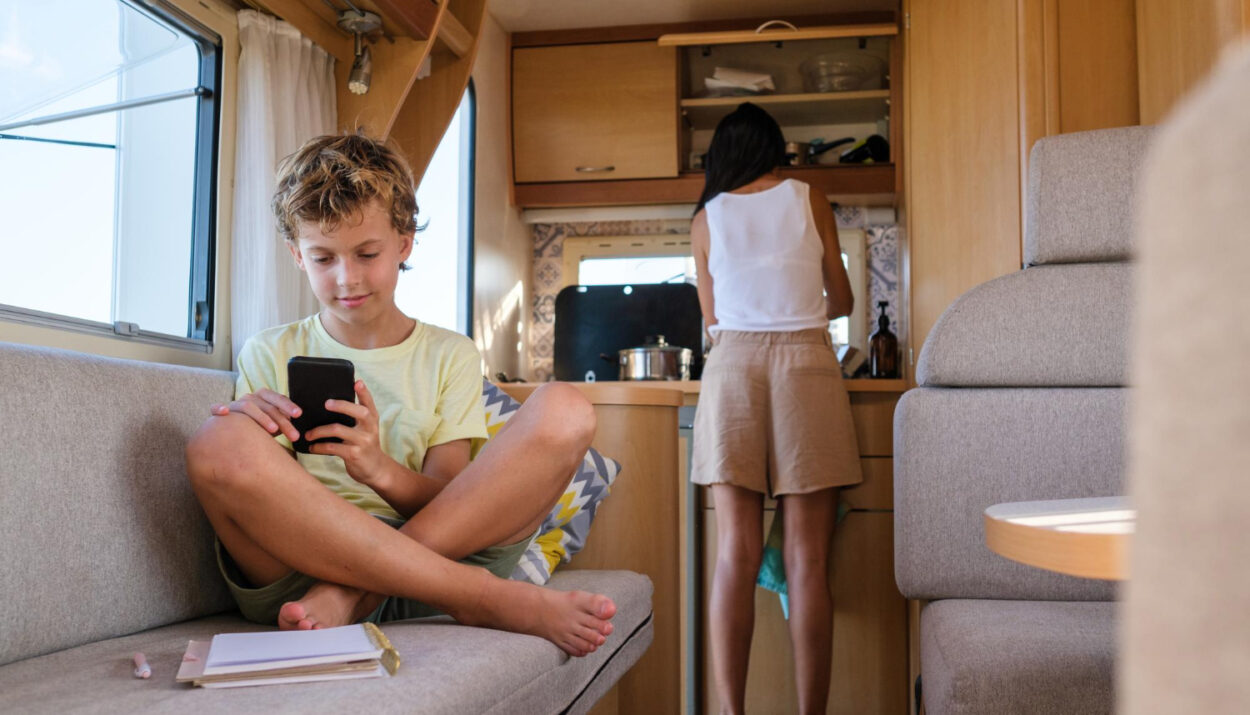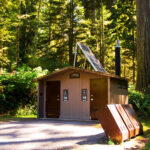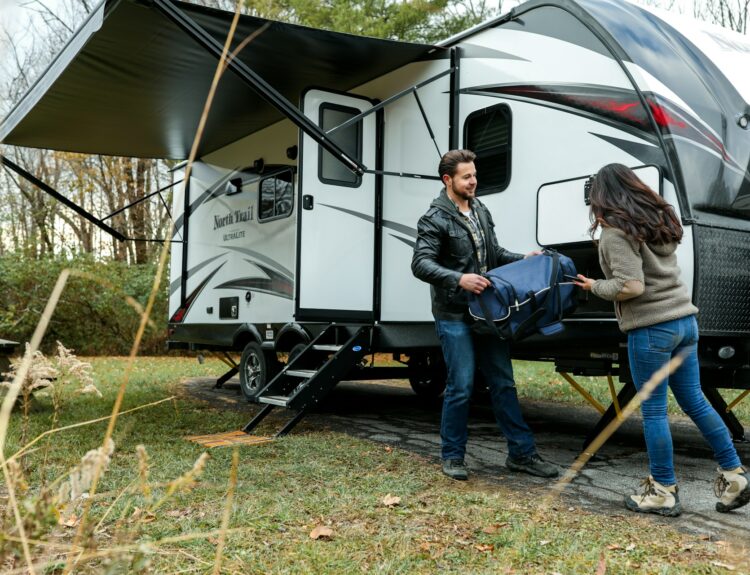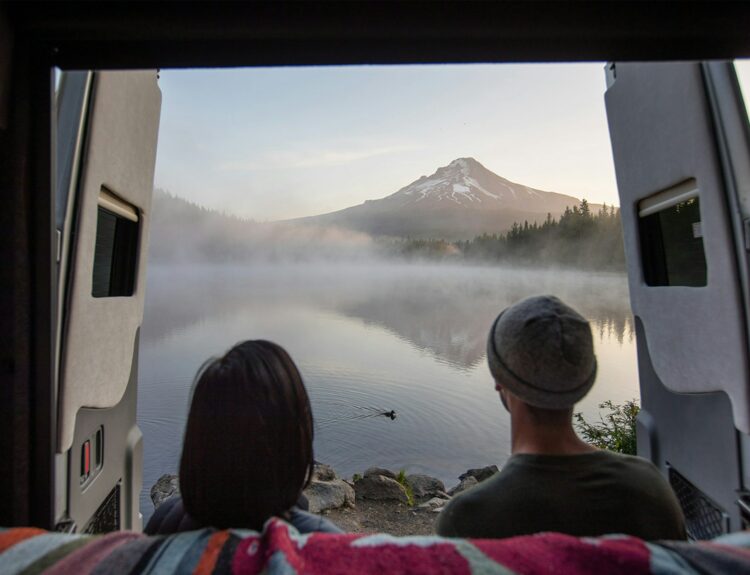Choosing between a kid-friendly vs adults only campgrounds model is one of the most important decisions you’ll make as an operator. Your choice affects who you attract, what amenities you invest in, how you market your park, and what kind of guest experience you deliver.
Should your park be a family-focused destination with entertainment for kids and space for group gatherings? Or should it be a peaceful, upscale retreat that offers a child-free atmosphere for adults looking to relax? Each approach attracts a different kind of traveler and sets the tone for your entire business strategy. In this in-depth guide, we’ll explore the difference between kid-friendly and adults only campgrounds, the pros and cons of each, and how to determine which path aligns best with your goals, location, and long-term vision.
Key Takeaways:
- Choosing between a kid-friendly or adults only model impacts your branding, amenities, and marketing.
- Family campgrounds often require more infrastructure and staffing but can attract larger, multi-day bookings.
- Adults-only parks appeal to a niche but loyal group of travelers looking for a quiet experience.
- Your decision should align with your location, long-term goals, and target market.
- Some parks succeed with hybrid models or seasonal shifts based on guest demand.

Understanding the Two Models
Before you define your brand, you need to fully understand the operational and experiential characteristics that separate kid-friendly vs adults only campgrounds.
What Defines a Kid-Friendly Campground?
Kid-friendly campgrounds are purpose-built for families with children of all ages. These parks prioritize safety, entertainment, and space, offering amenities that support group travel and keep kids engaged during their family camping trip. Expect features like:
- Large playgrounds
- Pools with lifeguards
- Splash pads
Scheduled activities such as arts and crafts or scavenger hunts, and evening family movie nights. Sites and cabins are often larger to accommodate family units or even multi-family groups.
The layout and design must prioritize child safety with fenced play areas, well-lit paths, and family restrooms. The convenience factor is also essential—on-site stores, dining, and laundry services make it easier for parents to manage daily needs while enjoying their stay. Many kid-friendly RV parks thrive near attractions like national parks, amusement parks, lakes, or family-centric tourist areas.
What Does Adults Only Mean in a Campground Context?
Adults only campgrounds are designed for guests aged 18 or 21 and older. These RV parks offer a different kind of atmosphere—quiet, relaxed, and often more upscale. The absence of children allows for a peaceful environment where adults can unwind, connect with nature, or enjoy curated experiences. Common amenities include hot tubs, tent camping, wine tastings, chef-prepared meals, wellness centers, and outdoor lounges.
These parks often cater to couples, solo travelers, and retirees seeking calm, privacy, and higher-end service. The smaller and more targeted guest demographic means fewer infrastructure demands. However, enforcing age restrictions is critical. You must communicate your policy clearly in your terms and across all booking platforms to ensure alignment and avoid misunderstandings.
Pros and Cons for Campground Owners
The differences between kid-friendly vs adults only campgrounds go beyond branding—they impact operations, staffing, infrastructure, liability, and guest behavior.
Operational Considerations for Family-Friendly Parks
Running a kid-friendly RV park means planning for high energy, high traffic, and high wear-and-tear. Restrooms, recreational facilities, and common areas need to be built for heavy use and regularly maintained. Staff training becomes a top priority, especially for managing safety around water, coordinating activities, and handling incidents involving minors. You’ll also need more comprehensive liability insurance to protect your business from risks associated with pools, playgrounds, and children’s events.
The investment pays off in several ways. Families tend to book longer stays—especially during school breaks—and often travel in groups, which increases occupancy and secondary spending. Kids may not directly drive revenue, but they influence how and when their parents travel. Building a loyal base of families can mean repeat visits for years.
Operational Considerations for Adults Only Parks
Adults only campgrounds operate with a different set of efficiencies. Fewer guests mean less infrastructure strain, reduced staffing needs, and lower liability concerns. You don’t need lifeguards, camp counselors, or playground maintenance. Your amenities can be more refined, focusing on aesthetics and comfort rather than durability.
That said, the guest pool is smaller and more selective. Adults only parks typically attract travelers with specific expectations, such as tranquility, cleanliness, and quality service. Any violation of the quiet environment—from poor soundproofing to lax age enforcement—can lead to complaints or reputational damage. However, guests who find what they’re looking for in a serene, child-free environment are often loyal, return frequently, and spend more on premium services.
Revenue and Booking Patterns
Kid-friendly campgrounds often experience sharp seasonal demand tied to school calendars. Summer, spring break, and holiday weekends bring peak occupancy, while midweeks and offseasons may be much slower. Your pricing and staffing must reflect these fluctuations.
Adults only campgrounds may benefit from more consistent year-round occupancy. Retirees and digital nomads are not tied to school schedules and can travel during off-peak times. These guests may book shorter stays but spend more per night, especially when offered premium lodging, spa treatments, or curated events. This model allows you to build a revenue strategy focused on value rather than volume.
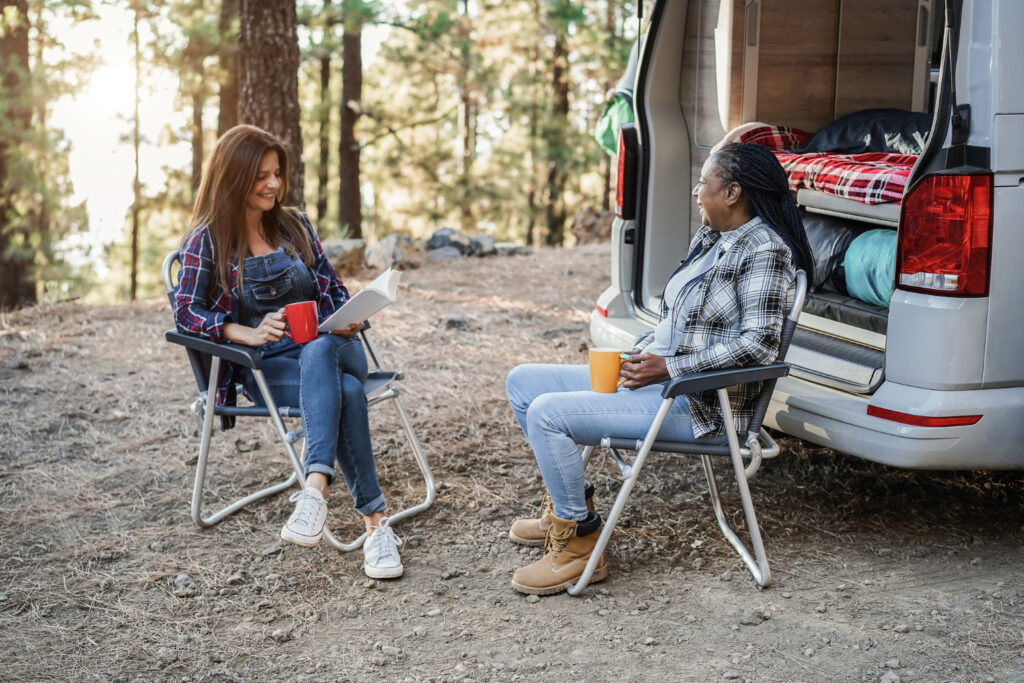
Who Are You Trying to Attract?
The biggest factor in the kid-friendly vs adults only campgrounds debate is your target guest. Who do you want your park to serve?
Demographics and Traveler Behavior
Families prioritize entertainment, safety, and value. If your campground is near amusement parks, public swimming areas, or attractions like zoos and family museums, then family traffic will likely dominate. Offering fun, convenience, and affordability can make your park a go-to destination for repeat visits year after year.
Adult campers traveling without children have different priorities. Many are retirees or full-time RVers seeking peace and simplicity. Others are younger professionals who want stylish cabins, Wi-Fi, and quiet outdoor space. These guests are less likely to tolerate noise, clutter, or chaos. They want calm, well-maintained environments and are willing to pay for privacy and luxury.
Regional and Seasonal Demand
Where your campground is located directly impacts which model is more viable. Warm-weather regions like Arizona and Florida attract adult snowbirds in winter, who overwhelmingly prefer adults-only parks. In contrast, lakefront or mountainous areas may thrive during summer with family campers. If your destination draws both markets, consider a hybrid or seasonal approach to balance revenue year-round.
Location and Local Culture Matter
When deciding between kid-friendly vs adults only campgrounds, your geographic location and nearby attractions play a pivotal role.
Urban vs. Rural Settings
Urban and suburban parks often serve as stopovers for families passing through. These guests seek convenience, fast service, and affordable rates. If your park is in a city or near a major highway, a kid-friendly model may be more practical.
In contrast, rural campgrounds—especially those with scenic views or private acreage—offer the quiet and isolation that adult campers crave. These locations can support smaller, higher-margin operations that emphasize quality over volume.
Nearby Attractions and Their Influence
Assess what your region already offers. If you’re near water parks, arcades, or interactive museums, families will naturally gravitate toward your park. But if you’re close to wineries, art galleries, or golf courses, your ideal guest may be an adult looking for quiet and refinement. Understanding your area’s tourism profile is essential to aligning your campground with the expectations of your most likely visitors.
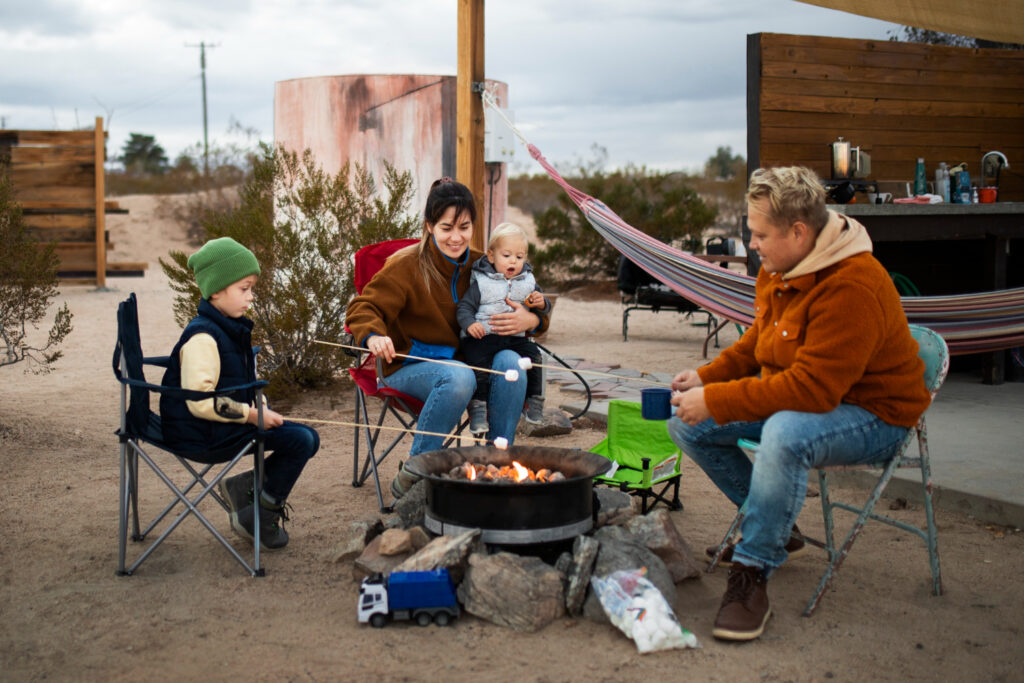
Exploring a Hybrid or Flexible Approach
If you’re not ready to fully commit to one direction, many campgrounds find success in blending both models.
Seasonal Shifts in Audience Focus
Some parks operate as family-friendly during peak summer months, then switch to adults-only in the fall and winter. This model maximizes seasonal demand while catering to both audiences throughout the year. The shift must be clearly communicated across your marketing channels and supported by flexible staffing and programming schedules.
Age-Restricted Zones or Adult-Only Weekends
Another strategy is to designate specific zones—like glamping tents or premium RV spots—as adults only, while leaving the rest of the park open to families. You can also host adult only weekends or wellness retreats. These tactics allow you to diversify your offerings without alienating either group, giving guests the power to choose their preferred environment.
Final Decision Framework
Ultimately, the choice between kid-friendly vs adults only campgrounds depends on the type of business you want to build.
Aligning With Your Brand and Business Goals
A family-friendly campground signals energy, activity, and community. It often involves more hustle and higher volume. An adults only park represents calm, elegance, and curated experiences. It may offer fewer bookings but higher margins. Both models can succeed, but only if they align with your brand identity, regional demand, and long-term goals.
Questions to Ask Before You Commit
Is your location better suited for family or adult tourism? Can you accommodate quiet areas or activity zones? Are you prepared for the insurance, staffing, and infrastructure required to host young kids safely? Do your local competitors already dominate one model? And finally, which guest experience are you most passionate about delivering?
Next Steps for Implementation and Marketing
Once you’ve decided on your direction, update your messaging, listings, and internal processes to reflect it. Rewrite your website content to clearly explain who your park is for. Adjust your OTA listings and booking policies to set guest expectations. Train your staff to create a consistent experience. If you’re transitioning, use email campaigns, loyalty offers, and regional partnerships to relaunch your brand to the right audience.
Frequently Asked Questions
1. Can I legally restrict young children from staying at my campground in the U.S.?
Yes, but it depends on how you classify your campground and how you enforce age restrictions. While the Fair Housing Act generally prohibits discrimination based on familial status, there are exceptions for certain types of lodging, including some campgrounds. To qualify, your park must meet legal definitions for transient lodging and clearly state its adults-only policy in your terms, signage, and booking pages. You should consult legal counsel to ensure your policies are enforceable and compliant with both federal and state law.
2. How do I market my campground as adults only without alienating families?
The key is to highlight what your park offers, not what it restricts. Use messaging that emphasizes peace, tranquility, upscale experiences, or wellness-focused amenities. Phrases like “quiet retreat for adult campers,” “relax without distractions,” or “privacy-focused experiences” appeal to your target demographic without sounding exclusionary. You don’t need to disparage family travel—just make it clear that your park is tailored for guests seeking a different kind of experience.
3. Is insurance more expensive for family-friendly campgrounds?
In most cases, yes. The presence of children increases the likelihood of liability claims, especially if you have playgrounds, pools, water features, or other recreational equipment. You’ll need general liability insurance that covers injuries, as well as specific policies for amenities like water slides, activity centers, or organized youth programming. Carriers may also require safety inspections, fencing, staff certifications, and waivers for certain activities. These costs are manageable, but they should be factored into your overall operating budget.
4. What happens if a guest brings children to an adults-only campground?
If your park has a strict adults only policy, you are within your rights to turn away guests who violate those terms. The best approach is to prevent the issue entirely through clear communication during the booking process. Make age requirements visible on your website, booking engine, and confirmation emails. If a guest still arrives with children, handle it respectfully but firmly. Offer a refund or help them find a nearby family-friendly park. Consistent enforcement protects your brand and ensures that other guests get the experience they were promised.
5. Can I change from one model to another after opening?
Yes, and many campgrounds successfully transition over time. However, changing from a kid-friendly to adults only model—or vice versa—requires thoughtful planning. Start by analyzing your guest data, reviews, and local competition. Once you commit, update all your branding, adjust your listings, and communicate the change through email, social media, and local partnerships. Be prepared to deal with pushback from past guests and make sure your amenities, policies, and staff align with your new focus. A soft transition, such as starting with adult only weekends or zones, can also help ease into the new model.

